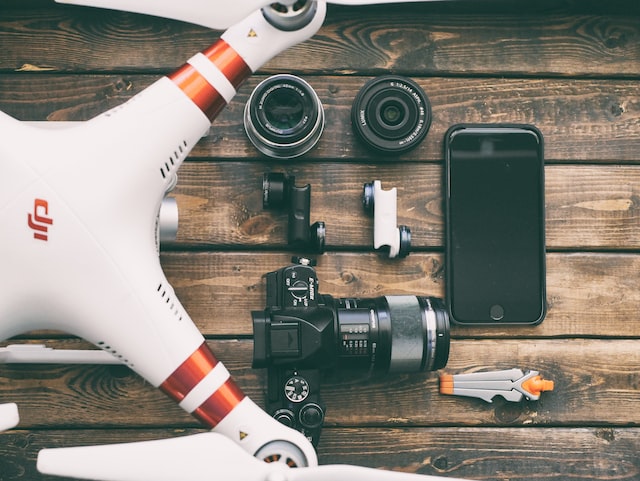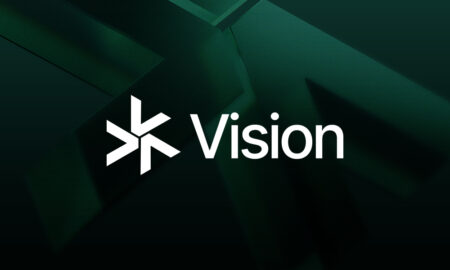Landscape photography captures the beauty of the natural world, from sweeping vistas to intricate details in the terrain. As technology advances, photographers have more tools at their disposal to create stunning images. Two popular options are drones and DSLR cameras, each offering unique advantages and challenges. This article compares drones and DSLRs for landscape photography, exploring their strengths, limitations, and practical considerations to help photographers decide which tool best suits their needs.
Understanding the Tools: Drones and DSLRs
DSLR Cameras
DSLR (Digital Single-Lens Reflex) cameras have long been the gold standard for professional and amateur photographers. These cameras use a mirror mechanism to reflect light from the lens to an optical viewfinder, allowing precise framing and focus. DSLRs are known for their versatility, high image quality, and extensive lens options, making them a staple in landscape photography.
Drones
Drones, or unmanned aerial vehicles (UAVs), have revolutionized photography by offering aerial perspectives previously inaccessible without expensive equipment like helicopters. Equipped with high-resolution cameras, drones allow photographers to capture landscapes from unique angles, soaring above mountains, forests, and coastlines. Modern drones are compact, user-friendly, and equipped with advanced features like GPS stabilization and automated flight modes.
Image Quality: A Core Consideration
DSLR Image Quality
DSLRs excel in delivering superior image quality, a critical factor in landscape photography where detail, dynamic range, and color accuracy are paramount. DSLRs typically feature large sensors (APS-C or full-frame), which capture more light and produce images with greater detail and less noise, especially in low-light conditions. For example, a full-frame DSLR like the Canon EOS 5D Mark IV or Nikon D850 offers resolutions exceeding 30 megapixels, allowing for large prints without loss of quality.
DSLRs also support RAW file formats, which retain maximum data for post-processing. This is essential for landscape photographers who adjust exposure, contrast, and colors to enhance the mood of a scene. Additionally, DSLRs offer a wide range of lenses, from ultra-wide-angle for expansive vistas to telephoto for isolating distant details, providing unmatched creative control.
Drone Image Quality
Drone cameras have made significant strides, but they generally lag behind DSLRs in image quality. Most consumer drones, like the DJI Mavic 3 or Autel EVO Lite+, feature smaller sensors (1-inch or smaller), which limit dynamic range and low-light performance. While these drones can produce impressive images, often up to 20-48 megapixels, they struggle to match the clarity and depth of DSLRs, especially in challenging lighting conditions like sunrise or sunset.
However, drones like the DJI Inspire 2 with interchangeable lenses or professional-grade models with larger sensors are closing the gap. These drones support RAW formats and offer decent dynamic range, but they come at a higher cost and still don’t rival the sensor size of a full-frame DSLR. For casual or semi-professional photographers, drone image quality is often sufficient, especially for digital displays or smaller prints.
Verdict on Image Quality
DSLRs have the edge in image quality due to larger sensors, higher resolutions, and better low-light performance. For photographers prioritizing gallery-quality prints or extensive post-processing, DSLRs are the better choice. Drones, while improving, are better suited for digital content or scenarios where unique perspectives outweigh the need for maximum image fidelity.
Perspective and Composition
DSLR Perspective
One of my friends who runs a camera and photography blog says that DSLRs offer unparalleled control over composition through lens selection and manual settings. Wide-angle lenses (e.g., 16-35mm) capture expansive landscapes, while telephoto lenses (e.g., 70-200mm) compress scenes to emphasize distant features like mountain ranges. Photographers can also use techniques like focus stacking to achieve sharp foreground-to-background detail, a common practice in landscape photography.
However, DSLRs are limited to ground-level perspectives unless paired with additional equipment like tripods or elevated platforms. Achieving high vantage points often requires hiking to remote locations, which can be time-consuming and physically demanding.
Drone Perspective
Drones redefine landscape photography by offering aerial perspectives that were once unattainable for most photographers. From low-altitude shots skimming treetops to high-altitude vistas capturing entire valleys, drones provide creative freedom to explore angles inaccessible to ground-based cameras. Features like automated flight paths and panoramic modes allow drones to capture sweeping 360-degree views or stitch together high-resolution panoramas.
The ability to hover and maneuver in tight spaces also makes drones ideal for capturing dynamic compositions, such as coastal cliffs or winding rivers. However, composing shots with a drone can be challenging due to reliance on a small screen or smartphone for framing, which may lack the precision of a DSLR’s viewfinder.
Verdict on Perspective
Drones excel in providing unique aerial perspectives, making them ideal for capturing dramatic, expansive landscapes. DSLRs, while limited to ground-based angles, offer greater control over composition and are better suited for detailed, traditional landscape shots. The choice depends on whether the photographer prioritizes creative angles or precise framing.
Portability and Accessibility
DSLR Portability
DSLRs, while versatile, are bulky and heavy, especially when paired with multiple lenses, tripods, and filters. A typical landscape photography kit, including a camera body, lenses, and accessories, can weigh 5-10 pounds or more. Carrying this gear on long hikes to remote locations can be a significant drawback, particularly for photographers working in rugged terrain.
Drone Portability
Modern drones are remarkably portable, with models like the DJI Mini 3 Pro weighing under 250 grams and folding to the size of a smartphone. Even larger drones, like the DJI Mavic 3, are compact enough to fit in a small backpack. This portability makes drones ideal for photographers who need to travel light or access remote locations without carrying heavy equipment.
However, drones come with their own logistical challenges, including battery life (typically 20-30 minutes per flight) and the need for spare batteries, controllers, and chargers. Additionally, drone operation may be restricted in certain areas due to regulations, which we’ll discuss later.
Verdict on Portability
Drones are the clear winner in portability, offering a lightweight, compact solution for capturing landscapes in remote locations. DSLRs, while more cumbersome, remain the choice for photographers who prioritize image quality and are willing to carry heavier gear.
Ease of Use and Learning Curve
DSLR Ease of Use
DSLRs have a steep learning curve, especially for beginners. Mastering manual settings like aperture, shutter speed, and ISO requires practice, and landscape photography often involves additional techniques like bracketing for HDR or using neutral density filters for long exposures. However, once learned, these skills provide precise control over the final image.
Drone Ease of Use
Drones are designed for accessibility, with user-friendly interfaces and automated features like return-to-home, obstacle avoidance, and pre-programmed flight modes. Even novice photographers can capture stunning aerial shots with minimal experience. However, flying a drone safely and effectively requires understanding airspace regulations, weather conditions, and battery management. Poor piloting can result in crashes or lost equipment, adding a layer of complexity.
Verdict on Ease of Use
Drones are easier to use for beginners due to their automated features, but they require learning safe piloting practices. DSLRs demand more technical knowledge but offer greater creative control once mastered. The choice depends on the photographer’s experience level and willingness to invest time in learning.
Cost Considerations
DSLR Costs
DSLRs can be a significant investment. Entry-level models like the Canon EOS Rebel T7 or Nikon D3500 start at $500-$700, while professional full-frame cameras like the Sony A7R IV or Nikon Z7 II cost $2,000-$3,500. Lenses add to the expense, with high-quality wide-angle or telephoto lenses ranging from $500 to $2,000 each. Accessories like tripods, filters, and memory cards further increase costs.
Drone Costs
Consumer drones are generally more affordable. Entry-level models like the DJI Mini 2 start at around $450, while mid-range options like the DJI Air 2S cost $1,000-$1,300. High-end drones, such as the DJI Mavic 3 or Inspire 2, range from $2,000 to $6,000. Additional costs include spare batteries, propellers, and optional accessories like ND filters for video.
Verdict on Cost
Drones are generally more cost-effective for beginners, with capable models available at lower price points. DSLRs require a higher upfront investment, especially for professional-grade gear, but offer long-term value due to their durability and versatility. Budget-conscious photographers may lean toward drones, while those prioritizing image quality may justify the cost of a DSLR.
Regulations and Legal Considerations
DSLR Regulations
DSLRs face few legal restrictions for landscape photography, provided photographers respect private property and local laws. Public lands, national parks, and other natural areas are generally open for photography, though permits may be required for commercial shoots.
Drone Regulations
Drones are subject to strict regulations, which vary by country and region. In the United States, the Federal Aviation Administration (FAA) requires recreational drone pilots to register drones weighing over 250 grams and follow rules like flying below 400 feet and avoiding restricted airspace. National parks and other protected areas often prohibit drone use to protect wildlife and visitor privacy. Internationally, regulations can be even stricter, with some countries banning drones outright.
Photographers must research local laws before flying drones to avoid fines or confiscation. Resources like Call of Photography provide valuable guidance on drone regulations and best practices for landscape photographers.
Verdict on Regulations
DSLRs offer greater freedom with fewer legal restrictions, making them easier to use in diverse locations. Drones require careful planning to comply with regulations, which can limit their usability in certain areas.
Post-Processing and Workflow
DSLR Post-Processing
DSLRs produce RAW files with extensive data, allowing for significant adjustments in software like Adobe Lightroom or Photoshop. Landscape photographers often spend hours fine-tuning exposure, color balance, and sharpness to achieve their desired look. This flexibility is a major advantage for those who enjoy the creative process of post-production.
Drone Post-Processing
Drones also support RAW formats, but their smaller sensors provide less data for manipulation. Aerial images may require additional corrections for distortion or vignetting caused by compact lenses. However, drone software often includes automated editing tools, such as DJI’s built-in filters, which simplify the process for beginners.
Verdict on Post-Processing
DSLRs offer greater flexibility in post-processing due to their superior image quality and larger RAW files. Drones are adequate for most editing needs but may fall short for photographers who demand extensive control over their images.
Practical Scenarios: When to Use Each
When to Choose a DSLR
- High-Resolution Needs: For large prints or commercial work, DSLRs deliver unmatched detail and clarity.
- Low-Light Conditions: DSLRs perform better at dawn, dusk, or in shaded areas where light is limited.
- Creative Control: When precise composition, lens choice, or advanced techniques like focus stacking are required.
- Unrestricted Areas: In locations where drones are prohibited, such as national parks, DSLRs are the only option.
When to Choose a Drone
- Aerial Perspectives: For unique angles like bird’s-eye views or shots over water or cliffs.
- Remote Locations: When portability is key, drones are easier to carry to hard-to-reach places.
- Dynamic Content: For video or panoramic shots, drones offer automated modes that simplify capturing cinematic footage.
- Budget Constraints: For hobbyists or beginners, drones provide a cost-effective way to capture stunning landscapes.
Conclusion: Which Is Better?
Neither drones nor DSLRs are inherently “better” for landscape photography; the choice depends on the photographer’s goals, budget, and shooting conditions. DSLRs are ideal for those prioritizing image quality, creative control, and versatility, particularly in low-light or high-resolution scenarios. Drones shine in capturing unique aerial perspectives and are more portable and beginner-friendly, though they face regulatory hurdles and limitations in image quality.
For many photographers, the best approach may be to use both tools complementarily. A DSLR can capture detailed ground-level shots, while a drone adds dramatic aerial perspectives to create a diverse portfolio. By understanding the strengths and limitations of each, photographers can choose the right tool for the job and elevate their landscape photography to new heights.































